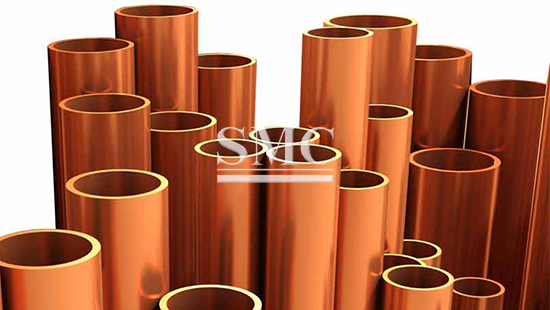Notice: Undefined index: sith_hide_share in /www/sites/alloy.wiki/index/wp-content/themes/likegoogle/single.php on line 32
Deprecated: get_settings is deprecated since version 2.1.0! Use get_option() instead. in /www/sites/alloy.wiki/index/wp-includes/functions.php on line 4862
There are many building materials, and their performances are different. The most commonly used ones are copper and brass, but many people can’t tell the difference between these two. So we need to understand the difference between copper and brass. What is the difference between copper and brass? The following is an introduction for you.
Both copper and brass are very good building materials. When you use them, you will choose which one to use according to the specific use situation. Both copper and brass have their own different properties, so the uses of copper and brass are very widely.
Definitions: brass by definition is an alloy of copper and zinc. If it is composed of these two types, it is ordinary brass, but if it is composed of these two other elements, it is Special brass. Red copper is a relatively pure copper. Since the color of red copper is purple-red, it is also called red copper.
The difference in appearance color: When we observe copper and brass, we will find that the color of brass is generally golden yellow, which is more shiny, but the color of copper is rose red, which is also shiny, so we look at their appearance color It can also be distinguished.
Difference in composition: The composition of red copper is mainly copper, and the content of copper can be as high as 99.9%, but the composition of brass is copper and zinc, and the special brass may have other magazines, so from the composition of our It can also be distinguished very well.
Difference in strength: The strength of copper and brass are different, we can distinguish from strength, brass has more components, so the strength of brass is generally higher, but the composition of copper is mainly copper, basically no other Impurities, so the strength of red copper is relatively low.
The difference in density: the density of brass is 8.52-8.62, the density of red copper is 8.9-8.95, so the density of red copper and brass is relatively large, and the density of brass is relatively small.
Difference in conductivity: Since copper and brass contain copper, both copper and brass can conduct electricity, but the composition of copper and brass is different, so the conductivity of copper and brass is different, brass There are many components, so the conductivity is relatively low. The component of red copper is mainly copper, so the conductivity is relatively high.
The difference between corrosion resistance and cutting performance: The corrosion resistance of brass is slightly worse, but the cutting performance is better, and the corrosion resistance of copper is better, but the cutting performance is poor.
Difference in price: The price of copper is more expensive than that of brass.

To sum up
Purple copper got its name because of its purple-red color. It is not necessarily pure copper, and sometimes a small amount of deoxidizing elements or other elements are added to improve the material and performance, so it is also classified as a copper alloy. Chinese copper processing materials can be divided into ordinary copper (T1, T2, T3, T4), oxygen-free copper (TU1, TU2 and high-purity, vacuum oxygen-free copper), deoxidized copper (TUP, TUMn), and a small amount of alloy Elements of special copper (copper arsenic, tellurium copper, silver copper) four categories. The electrical conductivity and thermal conductivity of copper is second only to silver, and it is widely used to make electrical and thermal equipment. Red copper has good corrosion resistance in the atmosphere, sea water and certain non-oxidizing acids (hydrochloric acid, dilute sulfuric acid), alkalis, salt solutions and various organic acids (acetic acid, citric acid), and is used in the chemical industry. In addition, copper has good weldability, and can be made into various semi-finished products and finished products by cold and thermoplastic processing. In the 1970s, the output of red copper exceeded the total output of other types of copper alloys.
Brass Copper-based alloys with zinc as the main alloying element are named because they are often yellow. Brass has beautiful color, good process and mechanical properties, high electrical conductivity and thermal conductivity, corrosion resistance in the atmosphere, fresh water and sea water, easy cutting and polishing, good weldability and cheap price. It is often used to make conductive and thermally conductive components, corrosion-resistant structural parts, elastic components, daily hardware and decorative materials, etc. It has a wide range of uses.
Generally speaking, the cutting performance of brass is better than that of copper (copper is easy to stick to the knife); in terms of non-cutting processing, the deformation resistance of copper is less and it is easier to form.
Copper is pure copper. The color of pure copper is orange red or rose red, but it will be oxidized into purple when exposed to air, so it is called copper.
Brass is a Cu-Zn alloy, containing about 80% copper. Harder than red copper, but poor electrical and thermal conductivity.
Guest contributors are welcome at the Alloy Wiki.It is a weekly wiki and guide on alloy information and processing technology, while also about the vast array of opportunities that are present in manufacturing. Our team of writers consists of a Machining Material Supplier / Machinist / Tool and Die Maker, a Biomedical Engineer / Product Development Engineer, a Job Development Coordinator / Adjunct Professor, and a President and CEO of a manufacturing facility.
Link to this article:What are the Differences Between Copper and Brass?
Reprint Statement: If there are no special instructions, all articles on this site are original. Please indicate the source for reprinting:Alloy Wiki,thanks!^^


